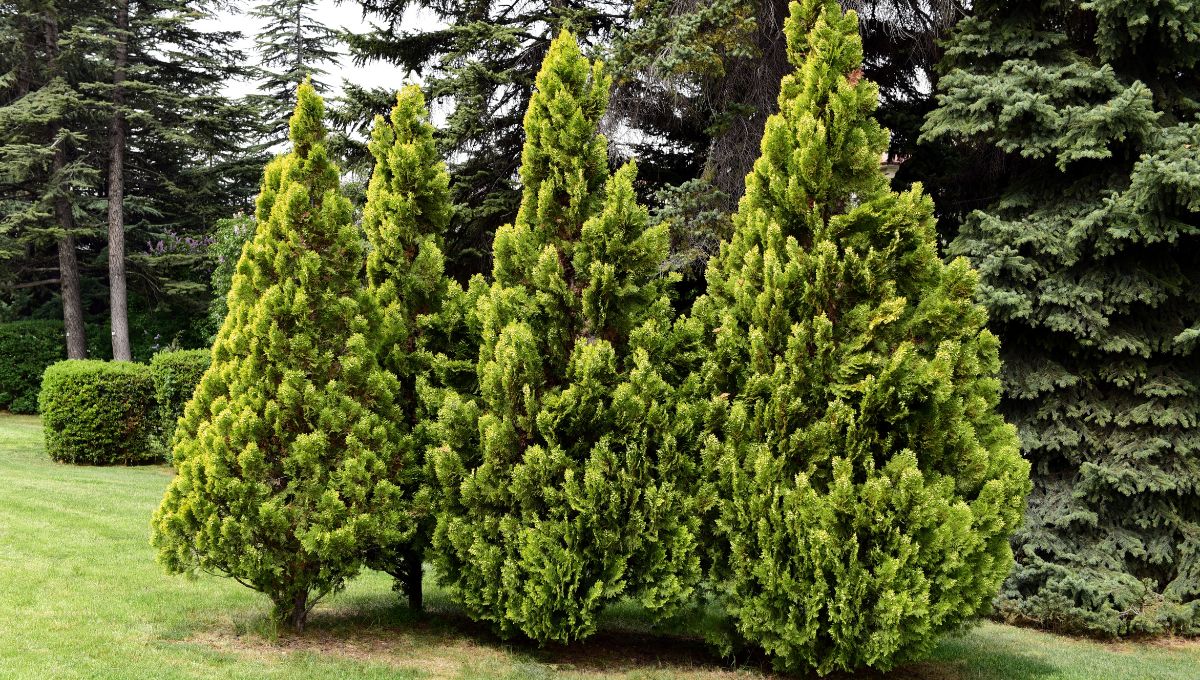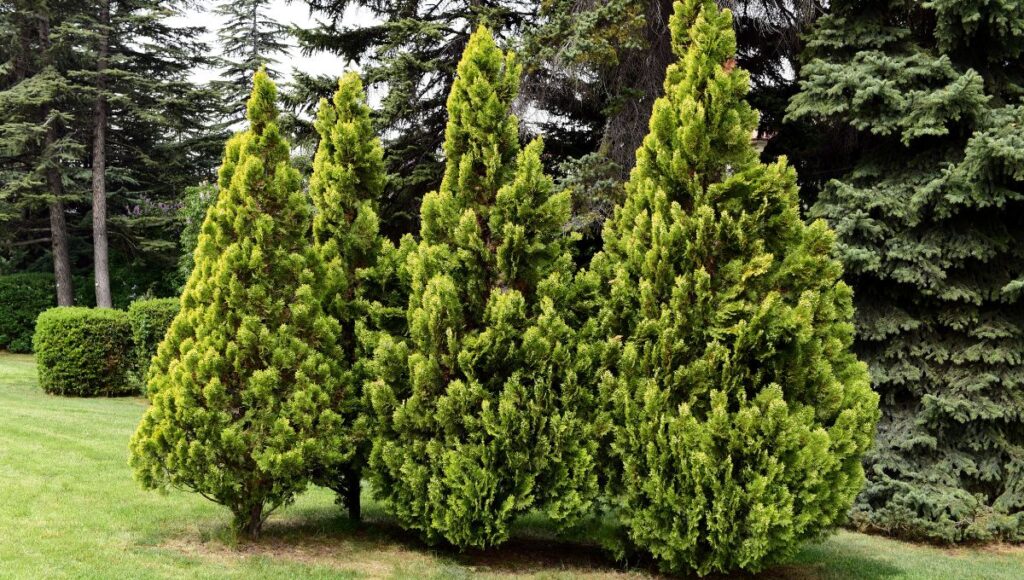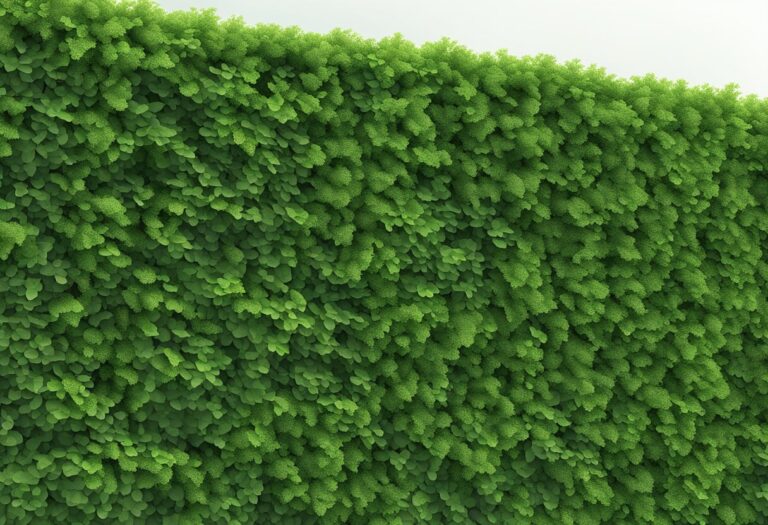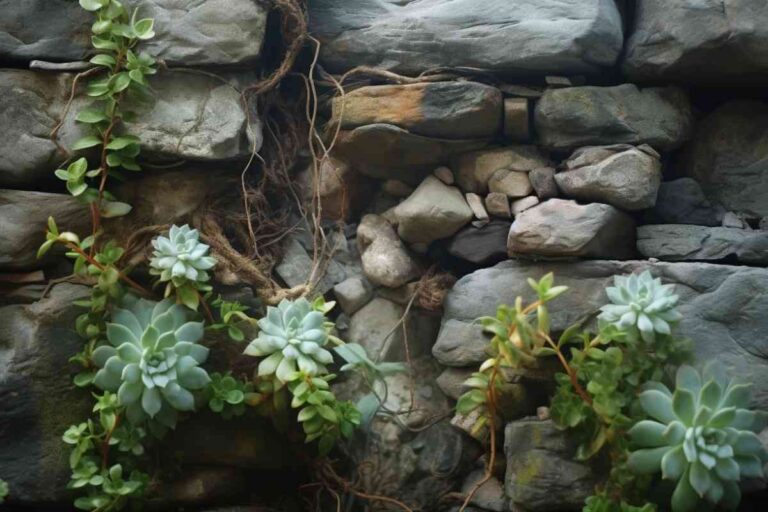Arborvitae: Essential Guide to Care and Growth

Arborvitae, also known as Thuja, is a versatile evergreen tree or shrub native to North America. These plants are part of the cypress family and are commonly used for their attractive appearance and numerous practical applications. There are several species of arborvitae, with Thuja occidentalis, also known as American arborvitae, being the most well-known and widely cultivated.

Arborvitaes are highly adaptable, making them an excellent choice for various landscaping purposes. They can be planted as standalone trees or used as hedging and screening. Their dense, scale-like foliage provides year-round coverage, making them a popular choice for both privacy and decorative purposes. Additionally, these evergreen trees have been historically valued for their medicinal properties and aromatic wood.
Key Takeaways
- Arborvitaes are versatile evergreen trees or shrubs native to North America.
- They are suitable for various landscaping purposes, such as standalone trees, hedging, and screening.
- Arborvitaes have multiple uses, including medicinal properties and providing aromatic wood.
Planting and Maintenance
Planting Process
When planting arborvitae trees, it’s essential to choose the right location. They thrive in cooler climates and prefer a spot with full or partial sunlight. The soil should be moist but well-drained, with a pH level that is slightly acidic. Before planting, prepare the soil by tilling and mixing in compost to improve drainage and provide nutrients. Dig a hole twice the width of the root ball, ensuring there is proper drainage to prevent root rot.
Place the arborvitae tree into the hole, making sure it’s at the same depth as it was in the container or burlap wrap. Fill the hole with soil, and gently tamp it down to remove air pockets. Water the tree thoroughly and apply a layer of mulch to help retain moisture and regulate soil temperature.
Care and Maintenance
Arborvitae trees are generally easy-care, but they require proper maintenance to ensure their health and longevity. Watering should be done consistently, especially during the first few years, to help establish a strong root system. In drought-prone areas, it’s essential to provide supplemental irrigation.
Fertilize the trees every spring using a balanced fertilizer, and prune them to maintain their desired shape and size. Pruning should be done in late winter or early spring to avoid damaging new growth. Although arborvitae can tolerate partial shade, they perform best in full sun, ensuring their foliage remains dense and vibrant.
Pests and Diseases
Arborvitae trees are vulnerable to several pests and diseases. Bagworms, spider mites, and deer are common threats that may cause damage to the foliage and branches. To manage these pests, it’s essential to monitor the tree’s health and take preventive measures like using insecticidal soap for mites and installing deer fencing.
Various diseases, such as root rot, can affect arborvitae trees, particularly in poorly-drained soils or with improper watering practices. By ensuring proper planting and care techniques, the risk of disease can be minimized.
Varieties and Growth
Several arborvitae varieties, also known as Thuja plicata, are suitable for different landscaping needs. The Green Giant variety is a popular choice due to its fast-growing nature and resistance to pests and diseases. At maturity, it can reach impressive heights, making it ideal for privacy hedges or tall screens.
Other cultivars include the rounded “Hetz Midget” with its slow growth rate and dwarf size, suitable for small gardens and borders. The pyramidal arborvitae tree can grow quite tall and features a strong and upright structure, making it an excellent option for adding vertical interest to a landscape.
In summary, planting and maintaining arborvitae trees requires proper care, but their versatility and resilience make them a valuable addition to any landscape. By choosing the right variety and cultivating healthy trees, we can enjoy arborvitae’s unique aesthetic for years to come.
Uses and Significance
Arborvitae, belonging to the Cupressaceae family, is a versatile and popular tree species known for its distinctive conical and flattened appearance. In this section, we will explore the practical uses and historical significance of Arborvitae and delve into its unique properties.
Practical Uses
Arborvitae is well-suited for a variety of landscaping applications due to its attractive appearance and hardy nature. Some common practical uses include:
- Windbreaks: Arborvitae’s dense growth and adaptability make it an ideal choice for creating windbreaks in both urban and rural settings. These trees can withstand harsh conditions, such as strong winds and cold climates.
- Privacy screens: Emerald green and gold varieties of Arborvitae are often used as privacy screens because of their thick, dense foliage. This makes them perfect for creating natural barriers for residential properties or hiding unsightly views.
- Specimen trees: Arborvitae can also be utilized as specimen trees, providing winter interest in landscapes. Their evergreen foliage, conical shape, and adaptability make them an attractive option for this purpose.
- Containers: Certain compact varieties of Arborvitae can be grown in containers and pruned into topiary forms, adding visual interest to patios or entryways.
Due to its durability, Arborvitae is also resistant to browning caused by snow and ice, making it an excellent choice for regions with harsh winters.
Historical and Cultural Significance
Arborvitae has played a significant role in various cultures throughout history:
- Native Americans: Eastern Arborvitae, also known as Thuja occidentalis, was valued by Native Americans for its many uses. For instance, they employed the tree’s wood to build canoes and other tools.
- Medicinal uses: The oil obtained from Arborvitae has been used to make tea and medicinal concoctions in traditional healing practices. A review of its pharmaceutical and pharmacological properties highlights its various therapeutic applications.
- Forest significance: The giant Arborvitae, in particular, played a crucial role in the ancient French forests, providing habitat and food for diverse wildlife.
- Perfume and cosmetics: Some species of Arborvitae, like Thuja plicata, were also used to create perfume and other cosmetic products because of their aromatic properties.
In conclusion, Arborvitae is both a practical and historically significant tree species, offering numerous benefits for landscaping, cultural practices, and traditional medicine. Undeniably, this resilient and adaptable tree has claimed a well-deserved place in history and continues to be a popular choice for contemporary applications.




